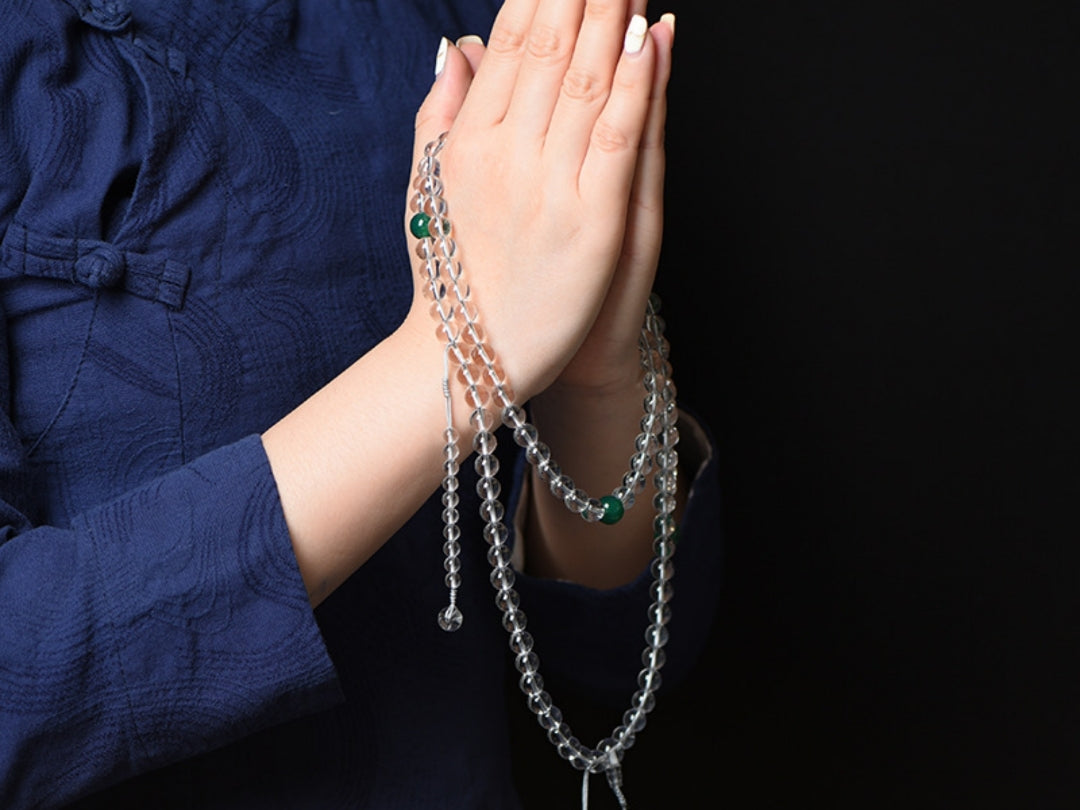The Makara, a mythic aquatic creature of Vedic origin, has swum its way into Tibetan art, temple carvings, and modern Tibetan jewelry as a powerful symbol of protection and adaptability. In Vedic texts, Makara is described as a sea-dragon or water monster—part crocodile, part elephant, part fish—serving as the mount of river goddesses. Over centuries, Tibetan artisans adopted the motif in temple roof eaves, ritual implements, and pendants, where its composite form embodies mastery over both land and water. Today, QiLingAura incorporates Makara designs into Thangka pendants and silver amulets, honoring this timeless guardian spirit in wearable form.

Origins in Vedic Scriptures
In ancient Vedic mythology, the Sanskrit term makara refers to a formidable sea creature often depicted as a half-crocodile, half-elephant hybrid. It appears as the vahana (mount) of Varuna, the god of oceans, and Ganga, the river goddess, symbolizing the untamed power of water. The Makara’s composite anatomy—crocodilian jaws, pachyderm trunk, piscine tail—echoes its dominion over multiple realms: the deep sea, riverbanks, and marshlands. Through hymns and ritual texts, early Indian artisans carved Makaras at temple thresholds to ward off evil spirits and safeguard sacred precincts.
Evolution into Tibetan Temple Carvings
When Buddhism reached Tibet in the 7th–8th centuries CE, local craftsmen assimilated many Indian iconographic motifs, including the Makara. In Tibetan gompas (monasteries) and lha khang (temple halls), gilded bronze Makara heads often flank the gilded Dharmachakra atop the roof ridge, their open mouths serving as downspouts to channel rainwater away from sacred structures. The integration of Makara into Tibetan architectural ornamentation is not merely decorative—it reinforces the idea of spiritual sanctity being protected by potent guardians drawn from the natural world.

Makara Motifs in Tibetan Jewelry
The Makara’s hybrid anatomy lends itself well to Tibetan jewelry design, where detailed carving can emphasize each animal element’s symbolic strength:
-
Crocodile Jaws: Represent vigilance and protection.
-
Elephant Trunk: Symbolizes wisdom and the ability to uproot obstacles.
-
Fish Tail: Denotes adaptability and flow through life’s challenges.
QiLingAura’s artisans echo these qualities in their Makara-inspired pendants, hand-carved from sterling silver and brass. Each piece showcases swirling lines and textured surfaces that recall temple carvings, making these amulets both protective talismans and works of art.
QiLingAura’s Makara Pendants: Design & Symbolism
-
-
Craft: Hand-cast sterling silver with oxidized details highlighting scales and tusks.
-
Meaning: Invokes the Makara’s protective power, guarding the wearer from harm.
-
Each pendant includes a subtle makara tail loop for threading onto your favorite Tibetan silver chain or sandalwood bead necklace, making it a versatile addition to any spiritual jewelry collection.
Wearing Makara Jewelry Today
-
Everyday Guardian: Wear your Makara pendant close to the heart to invoke ongoing protection.
-
Meditation Focus: Use the creature’s blended form as a visualization aid—imagine the Makara’s strength calming turbulent thoughts.
-
Layered Styling: Pair Makara amulets with Om Mani Padme Hum bracelets or Thangka pendants for a curated, layered spiritual look that bridges tradition and personal intent.
Embrace the Makara myth and its multifaceted symbolism in your daily life. With QiLingAura’s expert craftsmanship, these aquatic guardians become more than jewelry—they are enduring reminders of resilience, wisdom, and the protective currents that flow all around us.




